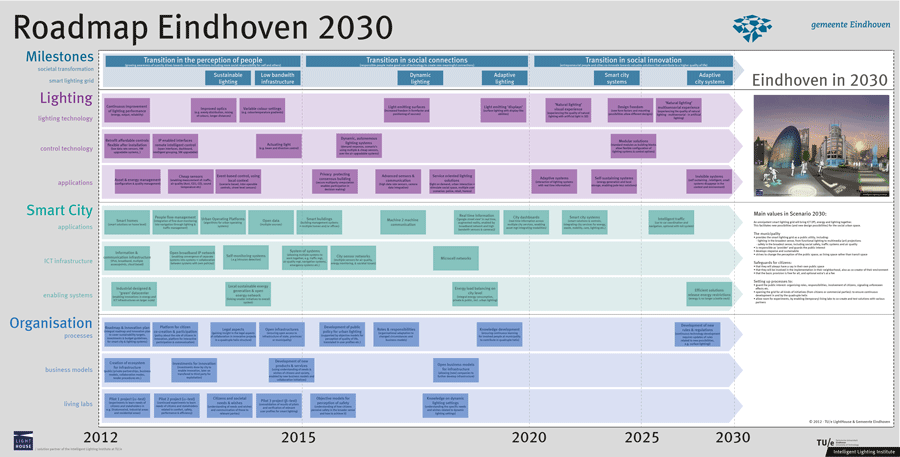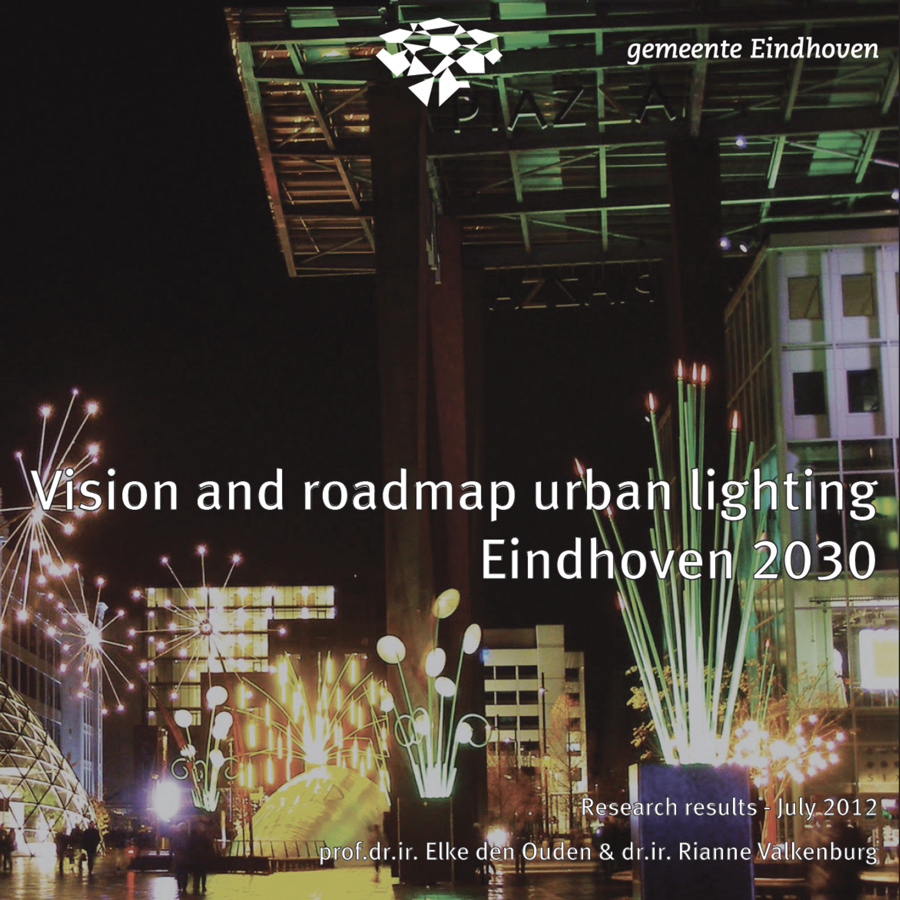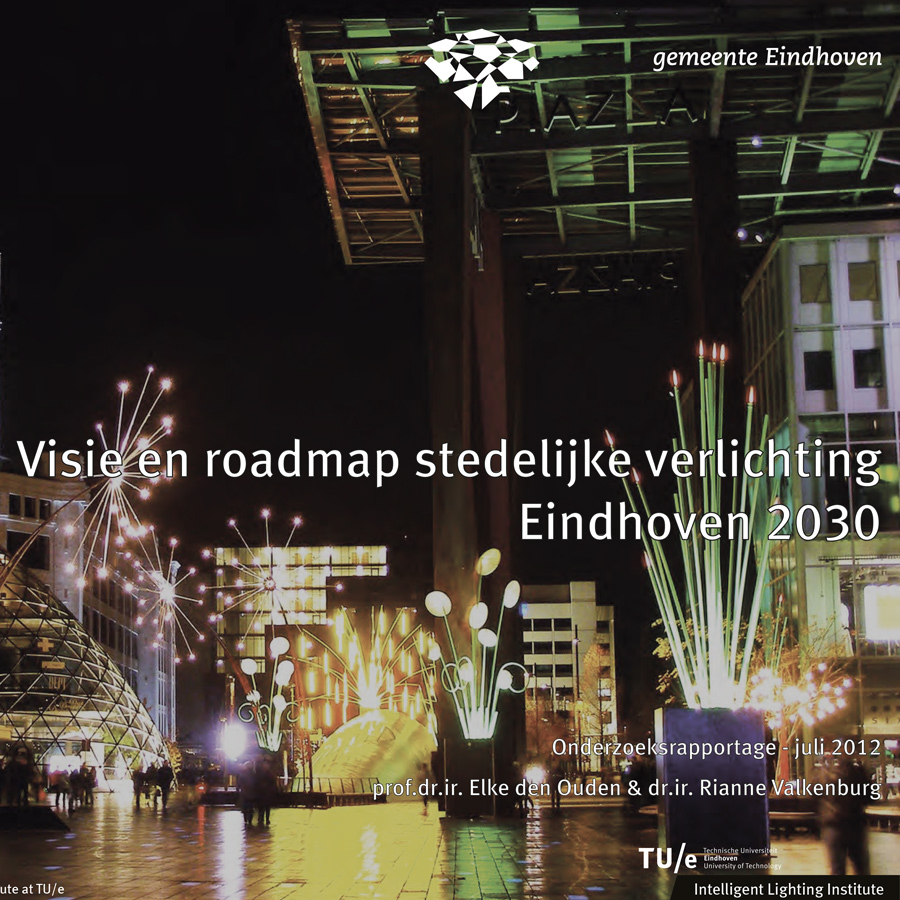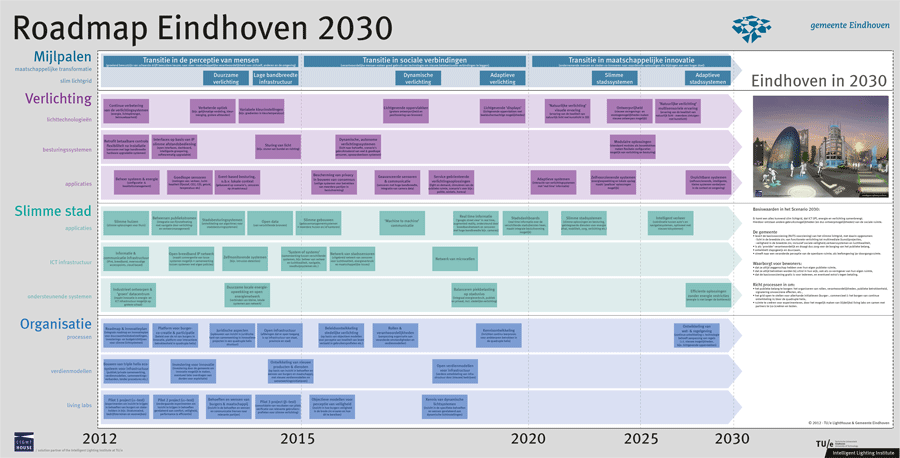 |
 |
 |
CO-CREATING VISIONS AND ROADMAPS |
Vision and roadmap urban lighting Eindhoven 2030 |
|
Vision and Roadmap The approach consisted of a number of steps. First of all the current ways of working, as well as the ambition level of the municipality are analysed. The Future Telling research method is applied to identify the most important drivers for change towards a livable cities in the coming 20 years. These drivers are then used to define a desired scenario for the city of Eindhoven in 2030. In a roadmap research the developments in lighting and smart city technologies are identified to realise the scenario, along with the organisational preconditions to achieve the ambition. These insights are subsequently used to define an innovation plan for the city with concrete steps to realise the ambition through public-private collaborations. |
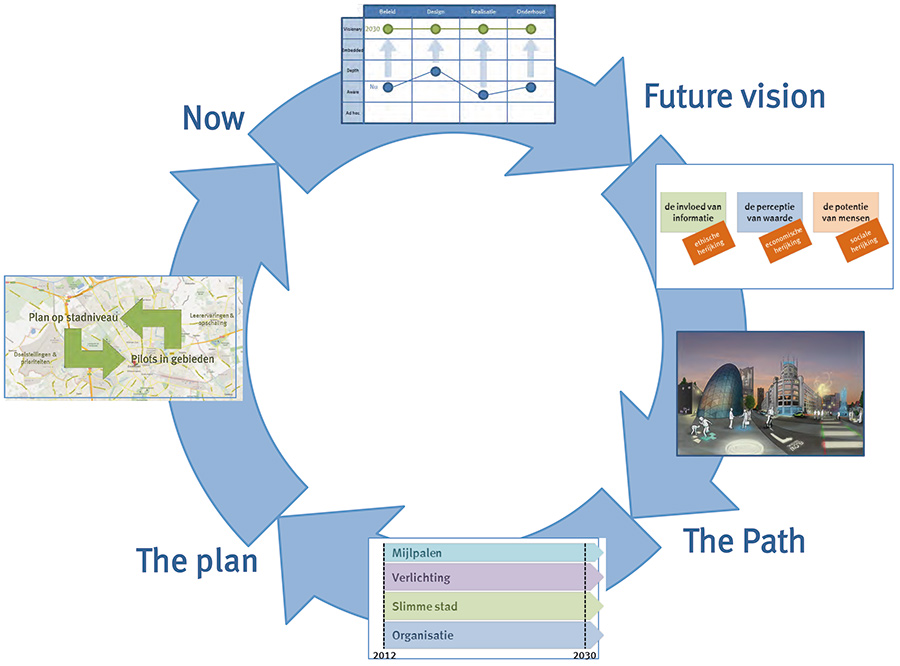 |
Now: defining ambition First the current situation and ambition level of the city of Eindhoven is defined. In this process the ILI Reference Model for Sustainable Urban Lighting is used to plot the results of the self-assessment and deep dive from the PLUS project. In a workshop the ambition level for the longer and shorter term is discussed. |
Reference Model for Sustainable Urban Lighting: 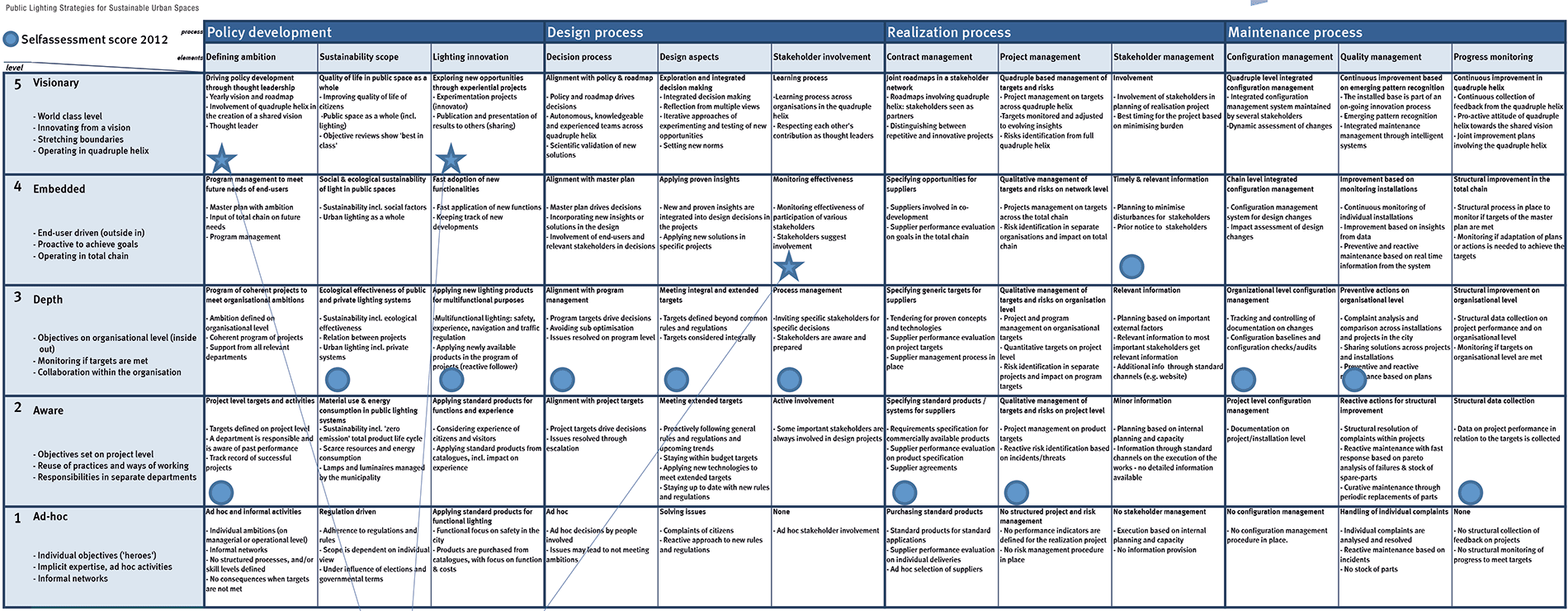 |
It became clear that the ambition level of Eindhoven is to become a visionary leader in urban lighting. This vision includes collaboration in a quadruple helix structure (with the municipality, business parties, research institutes and citizens as equal partners) to realise innovative lighting solutions that contribute to the quality of life in the city. Explorations with innovative lighting solutions will take place in (temporary) living labs and should contribute to the development of the city in becoming a hotspot for lighting innovation. The local council will face a changing role. From a lead user that offers the city as a test bed to suppliers, via a provider of infrastructure as enabler for innovation, to a full partner in an innovation collaboration that safeguards the public interest through citizen involvement in the innovation process. |
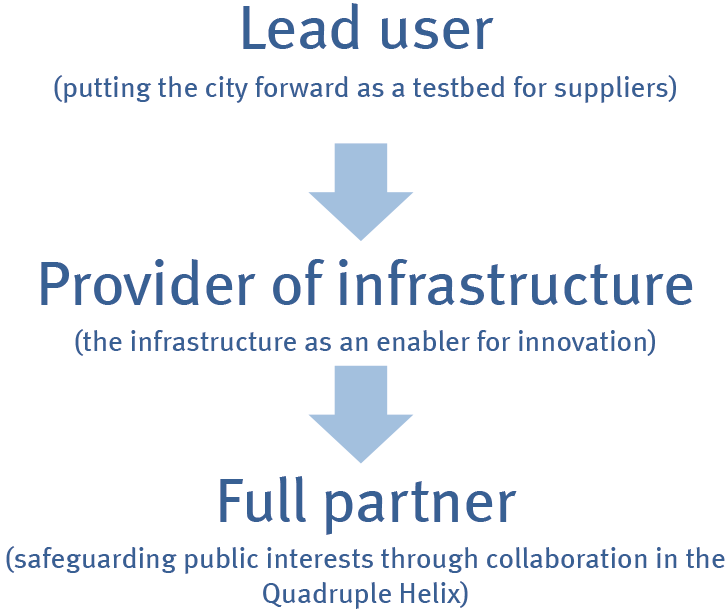 |
Future Vision: Scenario Eindhoven 2030 In the next step a vision on the future is explored. With the Future Telling research method 12 experts from industry, knowledge institutes and government are invited to select the top 10 global trends with major impact and discuss their view on how these will influence life in the city in 2030. The analysis of the results of the interviews revealed three drivers for change:
|
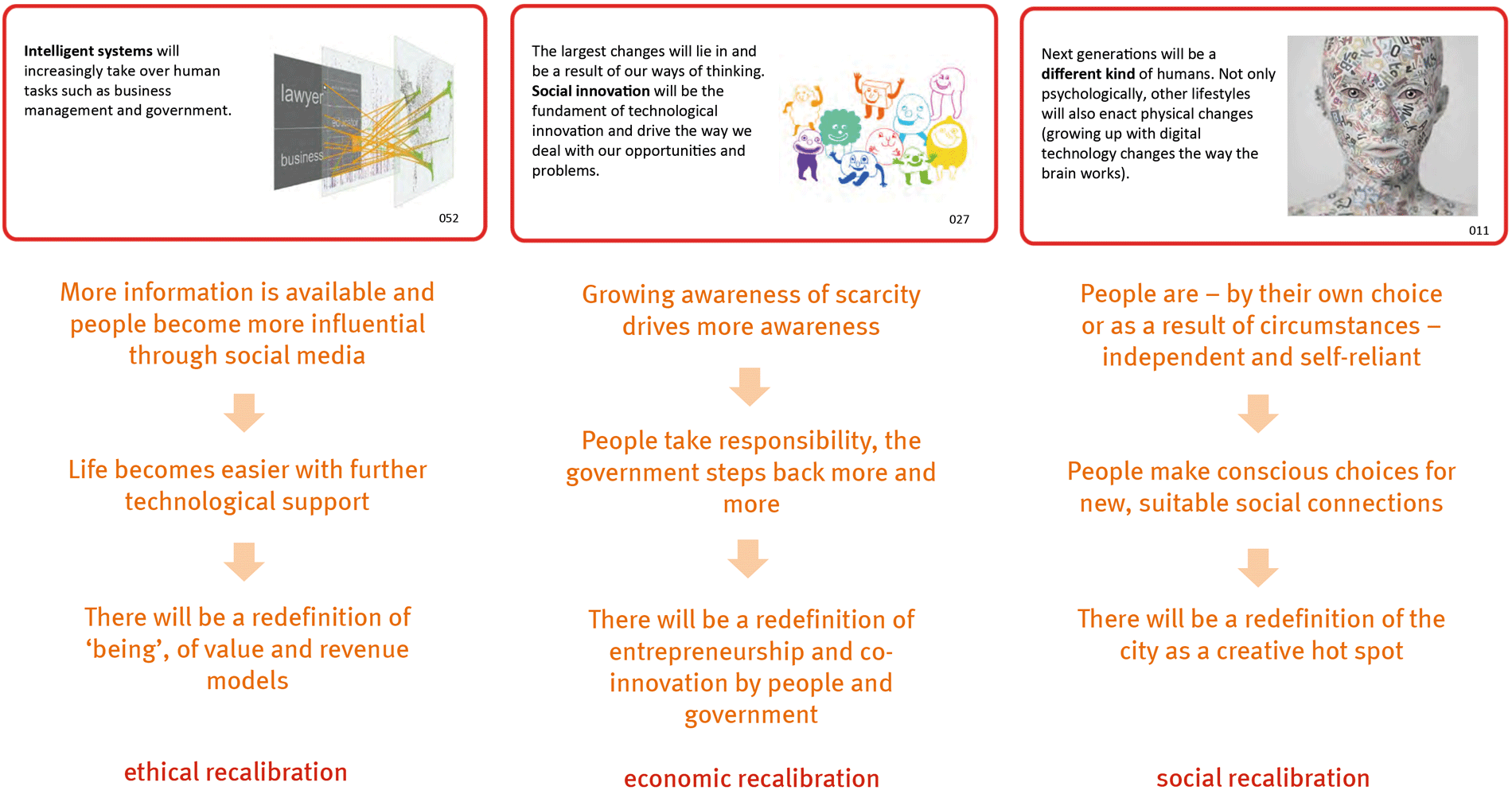 |
With the drivers for change a discussion is started on their impact on Eindhoven in 2030. A scenario is defined to paint the future vision for Eindhoven specifically. In this scenario an omnipotent smart lighting grid will bring ICT, energy and lighting together. This integration facilitates new possibilities for the social urban space. The municipality will have an important role in providing the smart lighting grid as a public utility, including lighting in its broadest sense (from functional lighting to multimedia art projections), and safety in its broadest sense, including social safety, traffic systems and air quality. In 2030 the public space is no longer just a transit space, but an extension of the personal living space. The municipality is responsible as provider and ensures the smart lighting grid is used to serve societal needs. Processes will have to be set up to guard the public interest and to open up the smart lighting grid for all kinds of initiatives (from citizens and commercial parties) to ensure continuous development in and by the quadruple helix. This also means that experiments should be enabled in (temporary) living labs with co-creation and testing of new solutions with various partners. |
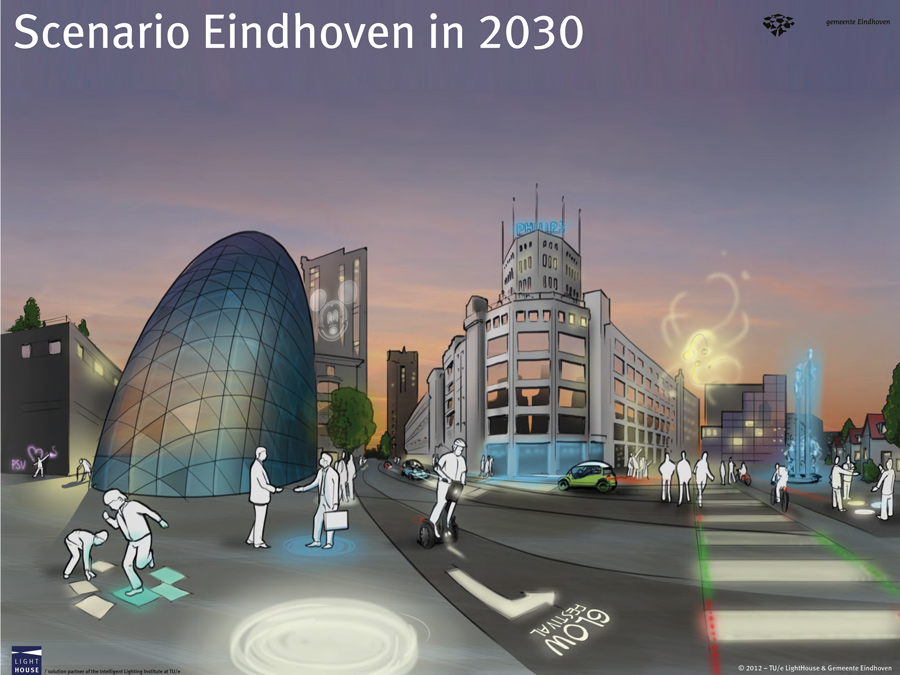 |
The Path: Roadmap Eindhoven 2030 In the next step various companies and knowledge institutes are invited to explore the technological possibilities and organisational preconditions to realise the scenario for 2030:
|
 |
The plan: Next steps In the next step the roadmap is translated into a plan towards a smart lighting grid. In this plan two activities are defined:
|
 |
The municipality will have an important role to establish the preconditions for innovation. This includes the safeguarding of public interest and availability of the basic services by providing open access to the system at all levels: connectivity to the infrastructure for public services, access to the devices, access to data for public interest and access to acquired knowledge. It also includes ensuring continuous innovation and co-creation with citizens by organising the quadruple helix to innovate at all levels of the system: innovations in the infrastructure, innovations in the system of devices and developing a standard interface, innovation in services to drive development of new applications, and social innovation to prioritise societal challenges and issues that are deemed important by the citizens. The concrete steps to be taken on the short term then involve the creation of a plan on city level that indicates ambitions and priorities. In parallel pilots can be done in specific city areas that provide a learning platform and scalability. Concrete actions include the installations of living labs in the city, the change towards an innovative organisation and taking the lead to organise required preconditions on European level. In the coming years the municipality will have to develop its role from lead user to full partner in the quadruple helix. This also means that all partners will have to embrace mutual dependency in collaborative innovation and learning-by-dong. The municipality will have to take the lead in this transition to guard the openness in the collaboration agreements and to ensure the public interest is safeguarded. |
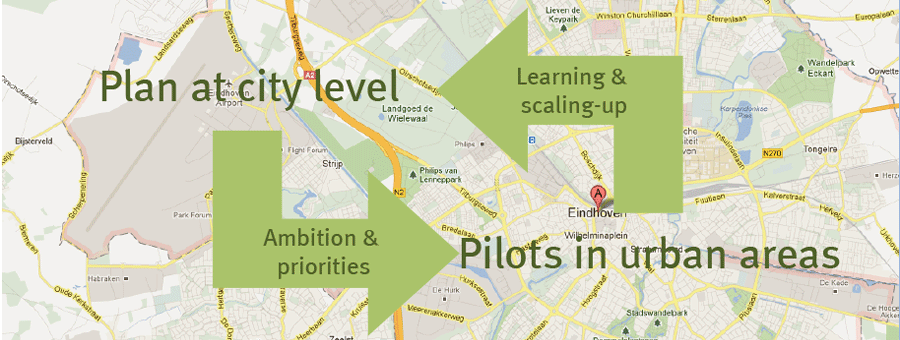 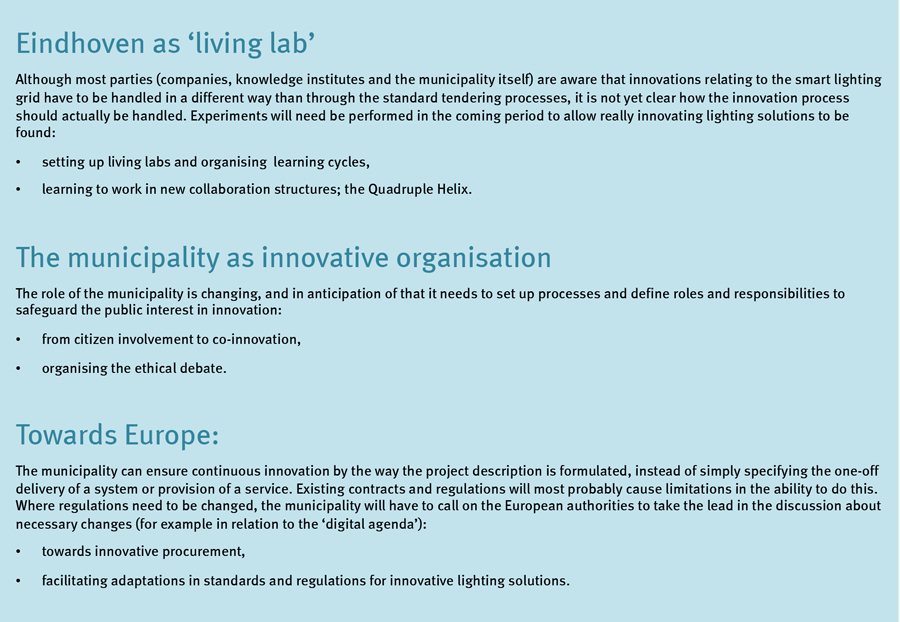 |
|
|
Note This report is based on the specific context and ambition of the city of Eindhoven. Although a number of conclusions will also be applicable for other cities, we wish to emphasize that different strategies and ambitions can also create different opportunities in realisation. The city of Eindhoven issued a tender for urban lighting based on this roadmap. The consortium Philips Lighting / Heijmans won the tender and started the co-creation process for innovative smart lighting solutions in five living labs in 2016. LightHouse is involved in the needs finding and impact analysis of the solutions. More information is available on the page 'Jouw Licht op 040'. |
Stay up-to-date
For more information on our approach to Co-creating Visions & Roadmaps, please download our brochure: |
 |
||
Webdesign: www.VissenCom.nl |
